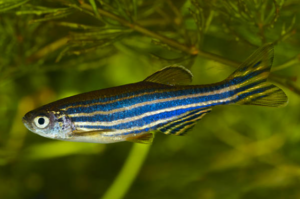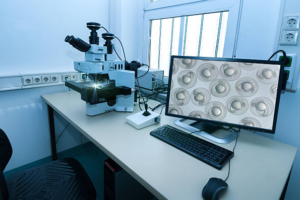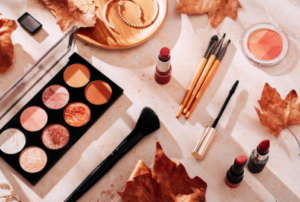Casting a Light on Unseen Beauty Testing Practices

In recent years, the beauty industry has made significant strides towards cruelty-free practices, with many brands opting for alternatives to animal testing. However, there’s a hidden aspect of animal testing that often goes unnoticed: the use of aquatic animals, primarily fish, in certain beauty experiments. While the focus has predominantly been on mammals like rabbits and mice, it’s crucial to shed light on these lesser-known practices. In this blog post, we’ll delve into the world of aquatic animal testing in the beauty industry, its ethical implications, and the efforts being made to find alternatives.
The Unseen Test Subjects
Zebrafish, scientifically known as Danio rerio, have become valuable subjects in toxicology studies within the beauty industry. These small, tropical fish, native to South Asia, possess several unique qualities that make them ideal for such experiments:
Transparency: One of the most remarkable features of zebrafish embryos is their transparency. During early developmental stages, the skin and tissues of zebrafish are almost transparent, allowing researchers to directly observe and study the internal processes, organs, and tissues. This transparency provides valuable insights into how certain cosmetic ingredients may impact embryonic development.
Genetic Similarity: Zebrafish share a surprising degree of genetic similarity with humans. Many genes involved in embryonic development and organ formation are conserved between the two species. As a result, zebrafish can serve as effective models for studying human biology and development.
High Reproduction Rate: Zebrafish have a rapid reproductive cycle, with females capable of laying hundreds of eggs at once. This high reproduction rate allows researchers to conduct experiments with large sample sizes, enhancing the reliability of their findings.
In toxicology studies, zebrafish embryos are exposed to various cosmetic ingredients or formulations to assess their potential impact on embryonic development. Researchers closely monitor key parameters, including heart rate, eye development, overall growth, and the presence of malformations or abnormalities. Any adverse effects observed in these experiments may raise concerns about the safety of these ingredients when used in beauty products.
In addition to toxicology studies, certain beauty products, especially skincare items, may undergo skin irritation tests. Fish, such as the Japanese medaka (Oryzias latipes), are used in these experiments due to their sensitive skin and the potential for skin reactions. Skin irritation tests involving fish typically aim to assess the potential for certain cosmetic ingredients to cause skin irritation, redness, or inflammation.
These tests often involve exposing the fish’s skin to a sample of the cosmetic product or ingredient, with researchers closely monitoring any adverse skin reactions. While fish may not possess the same type of skin as humans, their use in skin irritation tests serves as an initial screening process to identify potentially harmful ingredients before further testing is conducted on mammals or humans.
These lesser-known animal testing practices in beauty raise ethical concerns, emphasizing the need for continued efforts to find alternative methods that do not involve animal testing. The ethical treatment of all living beings, whether they are on land or in water, should be a central consideration in the beauty industry’s commitment to cruelty-free practices.

Ethical Concerns
While fish may not evoke the same emotional response as mammals, their use in cosmetic testing raises ethical concerns. Here are some key points to consider:
One of the foremost ethical concerns surrounding the use of fish in beauty testing is the lack of comprehensive animal welfare regulations that specifically protect aquatic animals. Unlike mammals like rabbits and mice, fish often do not benefit from the same level of legal protection. This regulatory gap can result in less oversight and limited safeguards for the humane treatment of these animals.
Without clear guidelines and legal protections in place, there may be insufficient standards for the care, housing, and handling of fish used in experiments. This lack of oversight raises significant ethical questions about the well-being and treatment of these creatures during testing procedures.
Research has increasingly shown that fish, including zebrafish, possess more complex cognitive abilities and sensory perceptions than previously assumed. They are now recognized as sentient beings capable of experiencing pain, distress, and suffering. This revelation has led to growing concerns about the ethical implications of subjecting fish to potentially harmful testing procedures.
Fish, like many animals, have a nervous system that allows them to perceive and respond to stimuli, including noxious or painful sensations. When exposed to substances or procedures that cause discomfort or harm, fish may experience stress and suffering. Ethical considerations demand that their well-being be a central concern in any experiments involving these animals.
Another ethical concern associated with the use of fish in beauty testing is the lack of transparency and public awareness. Many consumers are unaware that aquatic animals, particularly fish, are used in experiments to assess the safety and efficacy of beauty products. This lack of awareness can hinder consumers’ ability to make informed choices about the products they purchase.
Transparency is essential for fostering ethical practices in the beauty industry. When consumers are informed about the use of fish in testing, they can voice their concerns, demand cruelty-free alternatives, and choose products from brands committed to more ethical testing methods.
The ethical concerns surrounding the use of fish in beauty testing emphasize the importance of advocating for cruelty-free practices and supporting brands that prioritize animal welfare. As consumers, we have the power to drive change by making ethical choices, raising awareness, and demanding greater transparency in the beauty industry. Ultimately, these efforts can contribute to a future where beauty products are developed without causing harm to any living beings, whether they dwell on land or in water.

Alternatives to Aquatic Animal Testing
Efforts are being made to find alternative methods that do not involve the use of fish or any other animals. These alternatives are not only more ethical but also more cost-effective and often yield quicker results.
In Vitro Testing
In vitro testing, which translates to “in glass” testing, involves using human cell cultures or tissue samples to assess the safety and efficacy of beauty products. This method has gained prominence as an ethical and scientifically robust alternative to traditional animal testing.
Key Points:
- Human-Centric: In vitro testing focuses on human-derived cells or tissues, providing a direct human-centric perspective on how beauty products may affect us. This approach yields results that are more relevant to human biology and physiology.
- Precision and Control: Researchers can precisely control experimental conditions, ensuring accurate and reproducible results. This level of control is often unattainable in animal experiments.
- High Throughput: In vitro tests can be conducted on a large scale, allowing for high-throughput screening of multiple cosmetic ingredients simultaneously.
- Cost-Effective: In the long run, in vitro testing can be more cost-effective than animal testing, as it reduces the need for maintaining and housing animal subjects.
Examples of in vitro methods include using human skin models, 3D tissue cultures, and cell-based assays to assess various aspects of cosmetic product safety, such as skin irritation, sensitization, and absorption.
Computer Modeling
Computer modeling and simulations have emerged as powerful tools in the quest to eliminate animal testing in the beauty industry. These computational techniques use sophisticated algorithms and data to predict how certain ingredients will behave and interact with human cells and tissues.
Key Points:
- Predictive Accuracy: Advanced computer models can provide highly accurate predictions about the safety and efficacy of cosmetic ingredients, including their impact on skin and eye irritation.
- Rapid Results: Computer modeling can produce results quickly, reducing the time required for safety assessments compared to traditional animal testing.
- Cost-Efficient: While the initial development of computer models may be resource-intensive, they offer cost-efficiency in the long run, as they can be readily applied to a wide range of ingredients.
- Customized Simulations: Researchers can tailor computer simulations to mimic specific biological processes or skin types, making them adaptable to various cosmetic testing needs.
As technology continues to advance, computer modeling promises to play an increasingly central role in the cosmetic industry’s efforts to replace animal testing.
Human Volunteers
Clinical trials involving human volunteers are a preferred alternative to animal testing, especially when assessing the safety and performance of beauty products meant for application on human skin or eyes.
Key Points:
- Real-World Relevance: Testing products on human volunteers provides real-world insights into how cosmetics affect individuals under typical usage conditions.
- Safety and Sensitivity: Clinical trials allow for the evaluation of product safety, including potential side effects and allergic reactions, in a controlled but real-world context.
- Product Efficacy: Volunteers’ feedback can also help assess the efficacy of beauty products in achieving their intended outcomes, such as skin hydration or wrinkle reduction.
Ethical considerations prioritize the use of human volunteers over animal subjects whenever possible, particularly when assessing the safety of cosmetics meant for human use.

As consumers become more conscious of animal welfare issues, there is a growing demand for cruelty-free beauty products. Here are some steps you can take to make ethical choices:
Look for cruelty-free certifications like Leaping Bunny or PETA’s Beauty Without Bunnies logo on product packaging. These certifications indicate that the brand does not conduct animal testing. Visit the brands’ websites and read their animal testing policies. Many companies provide detailed information about their commitment to cruelty-free practices. Choose to support and purchase from brands that have a clear stance against animal testing. Your consumer choices have the power to drive change in the industry. While progress has been made in reducing animal testing in the beauty industry, there is still work to be done. Here’s how you can contribute to advocating for change:
- Raise awareness about the use of aquatic animals in beauty testing among your friends and family. Many people are unaware of this issue, and education is the first step towards change.
- Support legislative efforts to ban or restrict animal testing in cosmetics. Your voice and advocacy can make a significant impact on the industry.
- By consistently choosing ethical and cruelty-free brands, you send a clear message to the beauty industry that consumers demand cruelty-free products.
The beauty industry’s shift towards cruelty-free practices is commendable, but it’s essential to shine a light on lesser-known animal testing practices, including the use of fish. As consumers, we have the power to influence change by making informed choices, supporting ethical brands, and advocating for stricter regulations. By doing so, we can contribute to a future where beauty products are developed without causing harm to any living beings, whether on land or in water.

